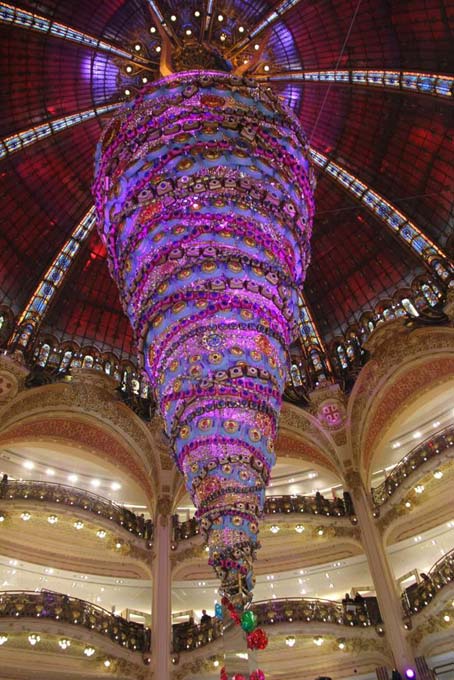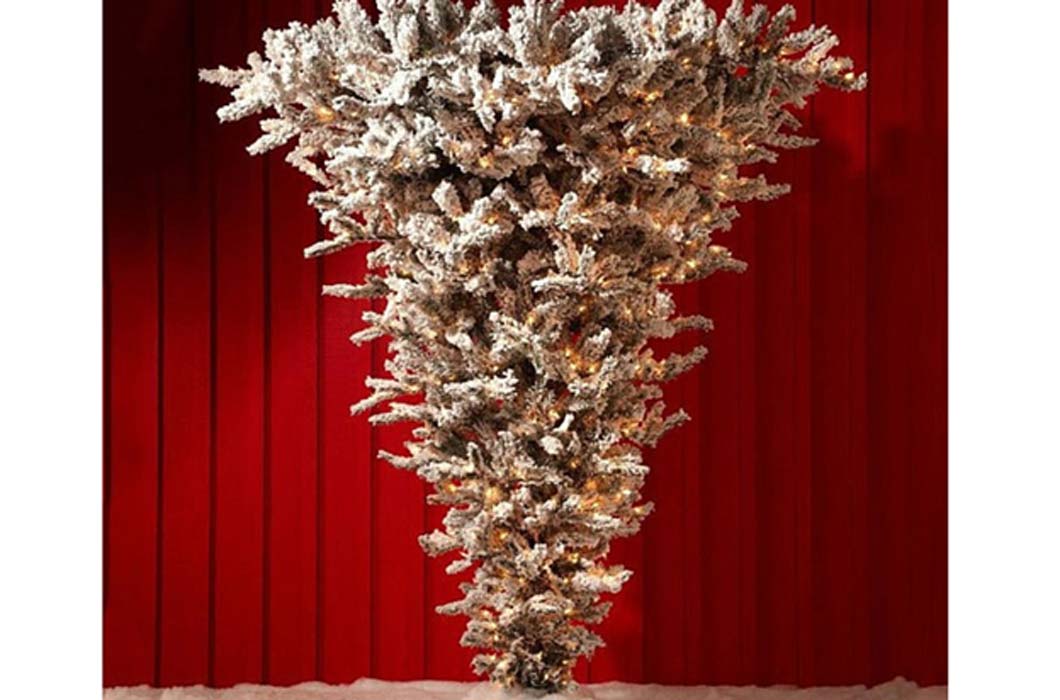A Tradition Revived? Inverted Christmas Trees May Have Pagan Roots
Hanging a Christmas tree from the ceiling makes some sense – it can keep your floor space clear and may protect your pets or young children from harm – but it is not common. The costly trend of hanging a tree upside-down is a whole other matter. As with many things that go against the norm, there is a lot of controversy and confusion about the practice of hanging an inverted tree from the ceiling. But it seems the idea is not a new one; in fact, the unconventional decorating idea may trace its roots, at least loosely, to pagan traditions.
CBC News reports that inverted hanging Christmas trees can be found “dangling from the ceilings of exclusive hotel lobbies and public atriums from London to Vancouver.” It is certainly an eye-catching way to decorate for the holidays, but are the people who practice this method of tree-trimming really following a tradition from the Medieval period, or is the idea purely commercial?
- Krampus, Son of Hel: The Ancient Origins of the Christmas Devil
- Santa the Shaman Comes to the New World: The Shapeshifting Magic-Man from the Ancient Past

An upside-down Christmas tree. Galeries Lafayette. (Laika ac/CC BY SA 2.0)
Followers of the upside-down Christmas tree practice say that it was a popular way of doing things in in the 12th century in Eastern Europe. Yet it is important to note here, the hanging element was generally just the top of a fir tree – not a huge, heavily decorated tree like you may find in a shopping center or luxury hotel today. In Poland, the top of the tree, or a branch from a fir tree, was hung pointing down from the rafters, usually facing the dinner table, in preparation for the holiday of Wigilia or Wilia. These decorative features were adorned with fruit, nuts, shiny sweets, straw, ribbons, golden pine cones, and other ornaments. An article by The Spruce says that the treats and sweets on the tree could not be eaten until the day after the festivities.
There is a legend that may explain the peculiar practice. The traditional story says Saint Boniface was the first to hang a “Christmas tree” upside-down, in the 8th century. Apparently, Boniface saw pagans preparing to celebrate the winter solstice by sacrificing a young man under an oak tree – a sacred tree in their beliefs. He was angered by their actions and cut the tree down. A fir tree grew in its place and Boniface supposedly decided to hang the inverted tree and use the triangular shape as a tool to explain the Holy Trinity to the pagans while trying to convert them to his religion.

Boniface chops down a cult tree in Hessen, engraving by Bernhard Rode, 1781. (Public Domain)
Some historians say that the tradition of hanging a Christmas tree was still popular in certain European countries as recently as 100 years ago. But the reason had changed by then. Bernd Brunner wrote in his book, Inventing the Christmas Tree, that people living in the 19th century needed the floor space. However, it’s worth mentioning that the tree was right-side up.
It seems the modern tree-hanging practice is meant to essentially serve the same purpose in stores. Dan Loughman, vice president of product development at Roman Incorporated, told NPR in 2005, “By having a tree upside down, you're taking a very small footprint on the floor, and you're placing all the ornaments at eye level. And then the retailers can move their store products around the bottom of the tree or on shelves, you know, just behind it.”
- Christkind: How Does this Christmas Gift-Bringer Differ from Santa Claus?
- The Holly and the Ivy: How Pagan Practices Found Their Way into Christmas

An upside-down Christmas tree is suspended from the ceiling at the Fairmont Vancouver Airport hotel in Richmond, B.C. (Darryl Dyck/Canadian Press)
The tradition of putting up Christmas trees may be tied to the German reformer Martin Luther, who popularized the use of the Christmas tree after being inspired by the beauty of the stars on Christmas Eve night. Pine trees also used to have a place in ‘miracle plays’ that were performed in front of cathedrals at Christmas time –the Church eventually banned the practice, but the tradition of having a decorated Christmas tree has continued.
Top Image: An upside-down Christmas tree. Source: This is Why I’m Broke


















Comments
Martin Luther died in 1546, therefore he could not have popularised the Christmas tree in1605 as he had been dead for over half a century by then
Douglas J Kearney
Although it could not possibly have had anything to do with Christmas, there may be a connection between upturned Christmas trees and the so-called Seahenge (or Holme 1) found on the beach near Old Hunstanton, Norfolk, and made famous in 1998. This was a circle of timbers with a very large upturned tree root in the centre dated to 2100 BCE (ie 4100 years ago). But who knows?